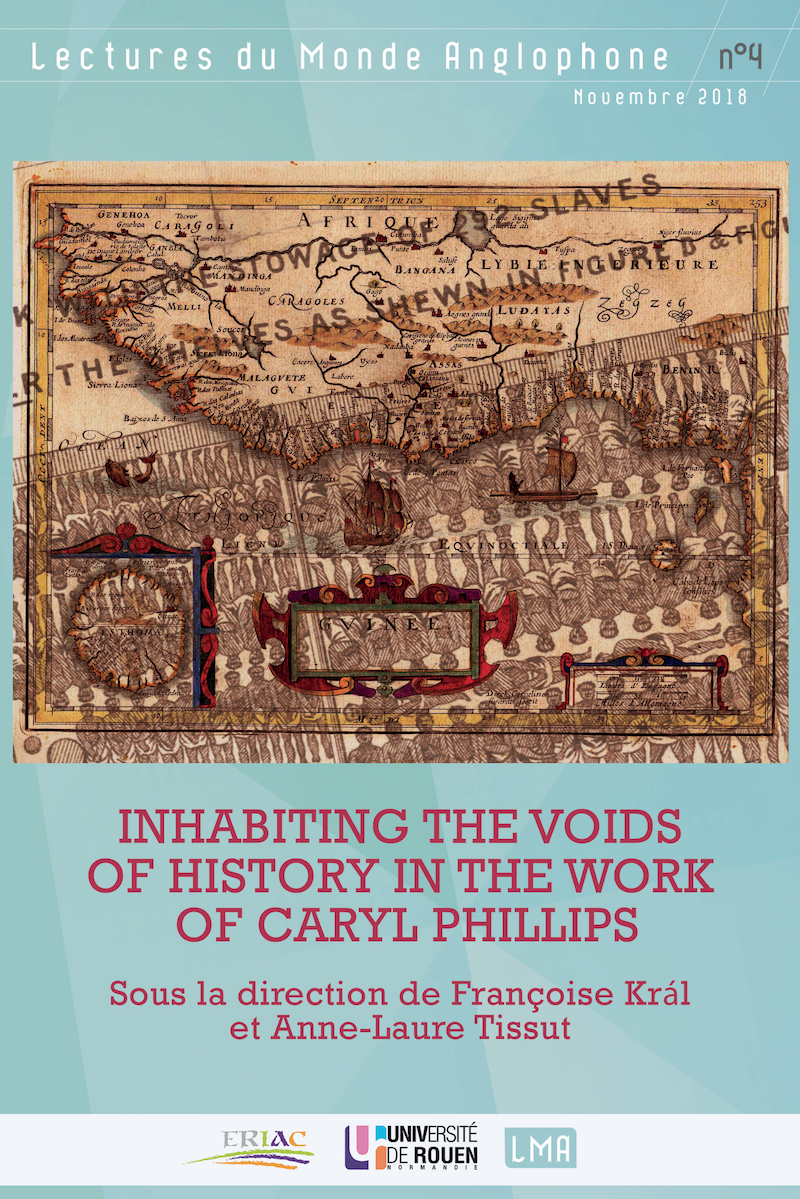4 | 2018
Inhabiting the Voids of History in the works of Caryl Phillips
The present volume proposes to re-read the work of Caryl Phillips through the prism of his engagement with history, both the history of the Middle Passage as well as the unread and unspoken history of lives which have not yet made it into official history. His work can be approached as an invitation to reflect on the role of literature and in particular on the specificity of the literary author with regards to the writing of history and the specificity inherent in handling historical material. More largely this question prompts another issue which is: where does history start, and where does it stop? In recent decades, the rise of subaltern history, women’s history and the histories of minorities has largely broadened the spectrum of what history is about. Absence and loss, mourning and the impossible return are key tropes which haunt the work of Caryl Phillips to the point that the aesthetics which he has crafted over the years seem to weave complex networks of narrative voices which circle voids that are constantly retold, and sounded out. This way of positing the void at the centre is all the more interesting as it constitutes an aesthetic shift from a choice often made in contemporary literature to represent the body, and in particular the wounded body, as a palimpsest of pain which bears witness to the sufferings of the 20th century subject, the post-modern subject and the post-colonial subject. Rather than engage with a thorough and graphic depiction of a suffering body, Caryl Phillips generates a voice which circulates along tangential lines of transmission and prompts the reader to receive and reactivate the salvaged narratives retrieved from archival oblivion. The present volume constitutes a reappraisal of the work of Caryl Phillips up to his most recent novel A View of the Empire at Sunset (2018).

- Françoise Král Introduction
- Kathie Birat Historicising Emotion in Crossing the River by Caryl Phillips
- Justine Baillie “There are no paths in water”: History, Memory and Narrative Form in Crossing the River (1993) and Foreigners: Three English Lives (2007)
- Françoise Clary Extending Intersectionality theory to the perception of Blackness and otherness in Phillipsian social space
- Josiane Ranguin “Happiness is not always fun”: Caryl Phillips’s Crossing the River, part IV (1993) and the BBC Radio Dramatization “Somewhere In England” (2016), Rainer Werner Fassbinder’s Ali: Fear Eats the Soul (1975) and Robert Colescott’s My Shadow (1977) and Knowledge of the past is the key to the Future, (St Sebastian) (1986).
- Giulia Mascoli Spectral Echoes in Caryl Phillips’s The Nature of Blood
- Maria Festa The Nature of Blood and Fragmented History
- C. Bruna Mancini Spaces of memory, identity, and narration in Crossing the River (1993) and A Distant Shore (2003)
- Max Farrar Radical dislocation, multiple identifications, and the subtle politics of hope in Caryl Phillips’s novels
